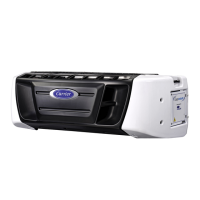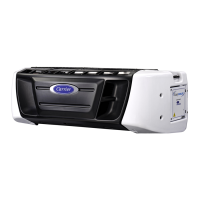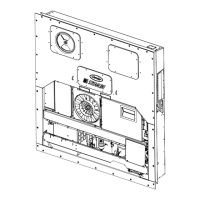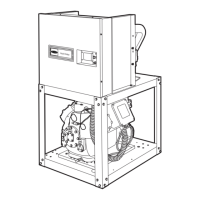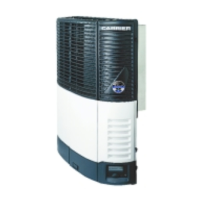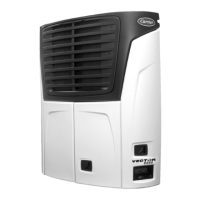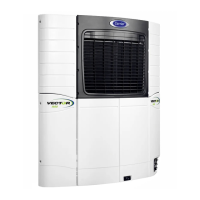5-19 62-11863
5.16 THERMOSTATIC EXPANSION VALVE
The thermal expansion valve is an automatic device which maintains constant superheat of the refrigerant gas leav-
ing the evaporator regardless of suction pressure. The valve functions are: (a) automatic response of refrigerant flow
to match the evaporator load and (b) prevention of liquid refrigerant entering the compressor.
During normal operation, the valve should not require any maintenance. If service is required, it should be per-
formed only by trained personnel.
Figure 5.12 Thermostatic Expansion Valve
5.16.1 Setting and Adjusting Superheat
Remote evaporator superheat setting is critical to proper unit operation. In order to have optimum performance from
both the remote evaporators, the superheat must be properly set. The Genesis-style remote evaporators supplied with
the current Supra 950MT units have the expansion valve superheat set at a nominal setting for average installations.
Figure 5.13 Thermostatic Expansion Valve Bulb and Thermocouple
Follow these simple steps for proper remote evaporator superheat check and adjustment:
1. Prior to checking the superheat, verify that the TXV sensing bulb is properly located on the suction line. It
should be located at 5 or 7 o’clock on the suction line, flat and tightly secured against the line, and insulated
with Prestite tape.
2. To check superheat, install a thermocouple (Simpson lead or equal) next to the TXV sensing bulb under the
strap clamp, as shown in Figure 5.13, and insulate with the existing Prestite tape.
3. Connect a suction pressure gauge to the flare fitting with Schrader valve located just before the remote
evaporator check valve.
4. The return air grille must be re-installed prior to checking superheat so the evaporator coil is exposed to
proper airflow.
5. Set the compartments to the values the customer will be utilizing in the field. When the compartments are
near set point, crack open doors or bulkheads so that each compartment is in COOL mode and not NULL
mode. Compressor operation should be fully loaded cool.
6. Read the bulb temperature and suction pressure. A series of readings should be taken once per minute over
a 5 or 10 minute period and averaged to get the most accurate superheat reading.
7. Using a pressure-temperature (P/T) chart, convert the suction pressure to temperature. The bulb temperature
minus the suction temperature equals the operating superheat (See
Table 5–5
).
Orifice
Strainer
Protective cap
Adjustment screw
Suction Line
TXV Bulb Clamp
Nut and Bolt
TXV Bulb
Thermocouple

